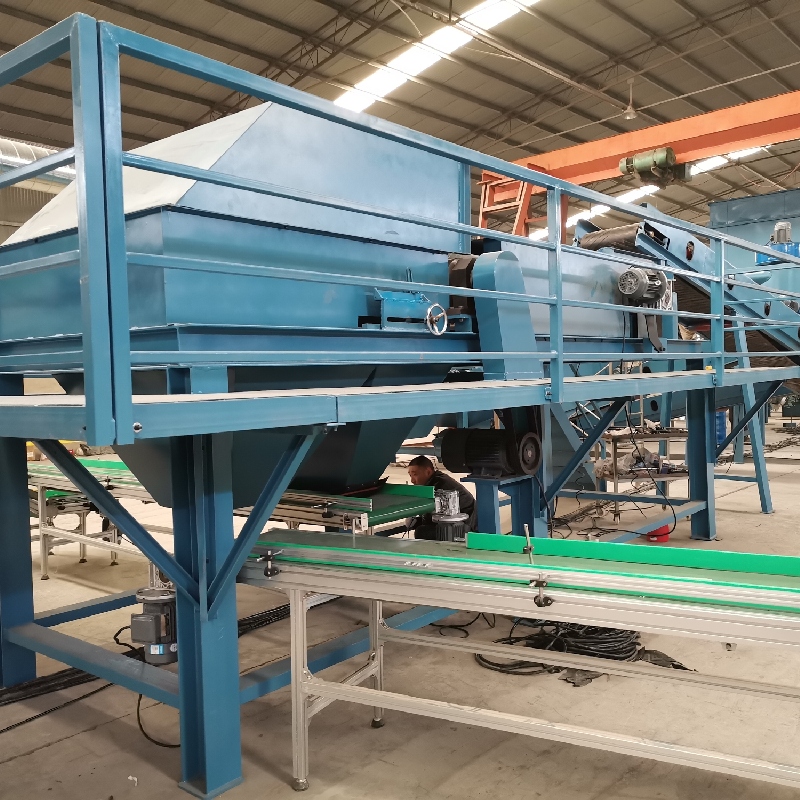Industrial shredding machines have become indispensable tools in numerous sectors, providing essential solutions for material reduction and waste management. Understanding the pricing landscape for these machines can be crucial for businesses looking to invest in this technology. Below, we explore the key factors that affect the cost of industrial shredding machines, offering insights rooted in real-world experience and industry expertise.

The price of an industrial shredding machine is influenced by several variables, each contributing to the final cost. The first and perhaps most significant factor is the type of shredder. Different shredders are designed for various materials and applications – from plastic and metal to paper and wood. High-capacity, heavy-duty shredders typically cost more due to their advanced engineering and robust design. For instance, shredders designed to handle heavy metals or large volumes of waste are generally more expensive due to their durability and increased power capabilities.
Next, the size and capacity of the machine play a crucial role in pricing. Machines built to process larger volumes of material or to operate continuously over extensive periods usually carry a higher price tag. These machines are typically integral to large-scale operations like recycling plants or manufacturers with substantial waste production. Enterprises that require a shredder capable of processing several tons of material daily must be prepared to invest significantly more than those needing a smaller, less capable unit.

Brand reputation and manufacturing standards are equally vital considerations. Established brands, known for reliability and robust customer support, often command higher prices. This is due to the perceived trustworthiness and proven track record of their products. Buyers are usually willing to pay a premium for reputable brands, as the associated reliability and availability of spare parts can significantly extend the machine's operational lifespan, thus reducing overall maintenance costs in the long run.
Another factor affecting the cost is the technology and features embedded within the shredder. Modern shredders are often equipped with technology that enhances efficiency and safety, such as automation systems, noise reduction technology, and advanced safety features to protect operators. These technological advancements can lead to higher initial costs but are often justified by the increased safety and efficiency they provide, which can save money over time.
industrial shredding machine price
Geographical location may also impact pricing due to factors such as shipping costs, import taxes, or regional demand fluctuations. Businesses in regions where these machines are less common might find themselves paying more due to limited local availability and higher transport expenses.
When purchasing an industrial shredder, it's crucial to consider not only the initial purchase price but also the long-term operational costs associated with owning and running the machine. These include maintenance and repair expenses, which can vary greatly depending on the machine's complexity and how heavily it is used.
Businesses are advised to perform a cost-benefit analysis when shopping for shredding machines. While cheaper machines may initially appear more cost-effective, investing in a high-quality, reliable shredder could save significantly on maintenance and downtime. This ensures that operations run smoothly and efficiently without frequent interruptions due to breakdowns.
Industrial shredding machine prices can range from a few thousand to several hundred thousand dollars, depending on the above factors. For small businesses or new ventures, leasing options or financing may be available, allowing them to spread the cost over time while still accessing the necessary technology.
In conclusion, understanding the cost dynamics of industrial shredding machines requires a comprehensive assessment of needs, brand considerations, and total ownership costs. Businesses must weigh the benefits of advanced features and more established brands against their budgetary constraints. By focusing on both the short-term affordability and long-term value, companies can make informed decisions that align with their operational goals and financial capacity. This strategic approach ensures that the investment in an industrial shredding machine meets the specific needs of the business, contributing to sustainable growth and operational efficiency.


